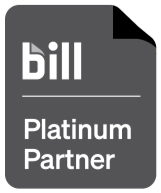
You spend your days at a desk, answering phones, answering to clients and answering to your boss. And while it’s comfortable, your mind (and, of course, your heart) is somewhere else.
Sound familiar? Many entrepreneurs can relate, because plenty of now-successful businesses got their start while their founder was putting in 40 hours a week somewhere else. You want to start a business, but you’re still employed.
Though it feels like an uphill battle—and to be sure, it won’t be easy—it’s definitely doable. In fact, the statistics are in your favor. Here are our best pointers for starting a business while you’re working a full-time job.
An Early Advantage
Believe it or not, starting a business while you’re still employed stacks the deck in your favor for success down the road.
According to a study published in the Academy of Management Journal, people who start a business while still at their “day job” are a third less likely to fail than those who take the leap into working on their new venture full-time all at once.
And, the study points out, if you do it this way, you’re in good company. Steve Wozniak remained on the payroll at Hewlett-Packard long after co-founding Apple. eBay was launched by Pierre Omidyar while he still worked for a software-development company. And, perhaps most famously, Henry Ford founded the Detroit Automobile Company while an employee of the Edison Illuminating Company.
Starting a business while you’re still collecting a regular wage takes a lot of the risk out of the equation. Since you’re still able to cover your living expenses, you won’t be forced to make as many weighty financial decisions as those who go full-time right away.
You’ll also be more apt to build the business you truly want to build, rather than making trade-offs or taking ill-fitting clients just to pay the mortgage. Though the thought of diving headfirst into entrepreneurship is an alluring one, realize there are many advantages to be had by building your business in phases while you’re still collecting a salary.
Cover Your Behind
Before you do anything, make sure you’re not violating the terms of your current employment.
In many cases, you will have signed a contract when you accepted your position, and oftentimes that includes a non-compete clause. A non-compete can have various stipulations, which may include:
- You can’t go after your firm’s current clients
- You must wait X months before launching your own business that competes with your current firm
- You can’t operate in your company’s geographical area for a certain period of time
- And more
Take a close look back at what you signed (or better yet, have a lawyer look it over) to make sure you’re not doing anything that might get you fired or sued while still employed at your day job.
Maximize Your Off-Duty Hours
While it’s tempting to work on your passion project every chance you get, it’s legally and ethically wrong to work on your side hustle while you’re on the clock at your day job.
In light of this, you’ll need to maximize your off-the-clock hours. Some call this ‘hustle.’
Those evenings you spend catching up on Netflix and those Saturday mornings sneaking in a round of golf? They’re your new office hours, and they’re how side gigs eventually turn into full-time jobs.
This is a tricky phase to navigate, especially when you have a family that needs and deserves your time, too. My best advice is to prioritize, prioritize, prioritize.
You’ll likely have to recognize that for the next 12 months, casual friendships or your hobbies are going to take a backseat to your family and your side hustle. If this isn’t something you’re willing to commit to, it might be that your passion project is better suited as a hobby than a new business.
The good news is this won’t last forever. This brings us to our next important tip.
Establish an Exit Plan
To keep things moving forward—and to keep yourself from burning out—it’s a good idea to have an exit strategy in place if you’re serious about making your business your new full-time focus.
12 months is an ideal time frame. It’s enough time to test your concept and begin bringing revenue in the door, but not so long that it’s unsustainable. Any longer than a year is a very long time to be spreading yourself so thin, while less than that might not be enough to build up the safety net your family needs.
Take a calendar and set a date a year from now; this is the day you’ll quit your job. Then, work backwards planning all the steps that need to happen for you to comfortably resign by then.
Note—you don’t have to be completely replacing your full-time salary by the date you set. In many cases that won’t not be feasible. But, you’ll want to work savings into your exit strategy so you have enough of a cushion in the bank to cover several month’s expenses once you do make the leap.
Focus on Money in the Door
Finally, the bottom line: proving that your side hustle can turn a profit.
At the end of the day, this is the only thing that really matters. If you can’t make some money in a year’s time, you’ll need to ask some tough questions about whether your new venture is really viable.
Though it’s fun to get caught up in the details of your new business, like a fancy website or an expensive branding package, for now, focus on money in the door. This means dedicating your efforts and any money you invest only to things that will help you bring in business.
For every dollar you’re about to put into this side hustle, ask yourself: will this have a direct impact on getting me business/clients? If the answer is no, move along to something that will help you get money in the door.
Remember, this is one of the advantages of launching your business in phases. You get to focus on the real meat of the business’ operations, while the frills can come later when you’ve proven your concept.
By putting your nose to the grindstone, establishing a game plan and focusing on revenue-generating strategies, you’ll be more than ready once that date in your calendar rolls around to hand in your two weeks’ notice.
Whether you're a budding entrepreneur or an old-timer, you'll learn new ways to run a more profitable business by subscribing to our blog!













.png)




